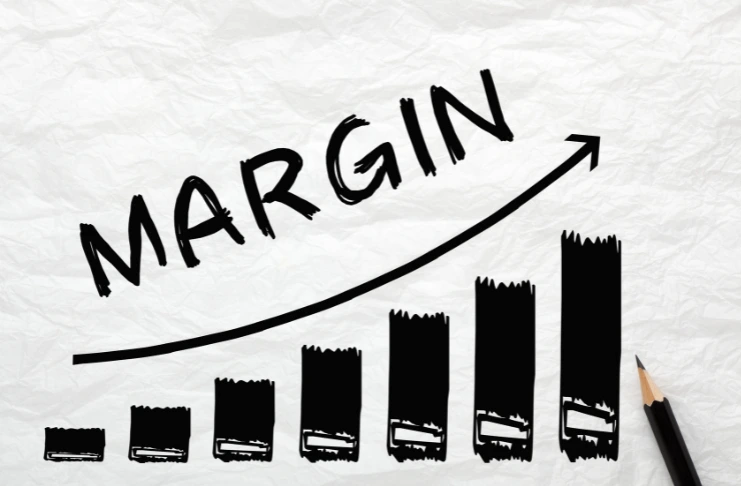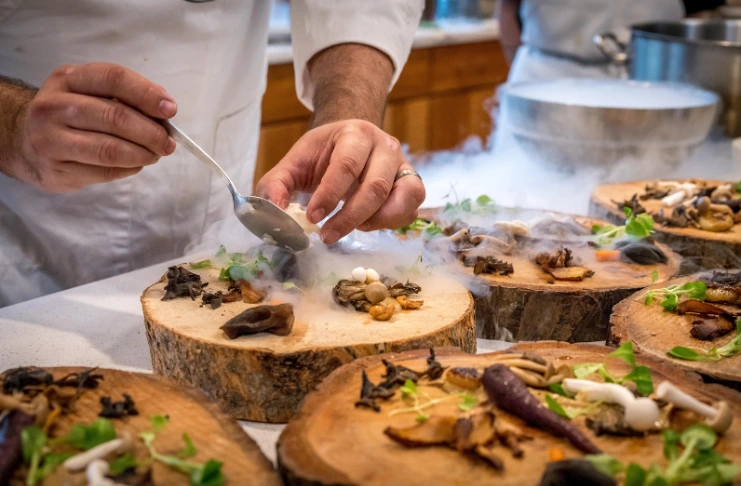
Running a restaurant is about more than just serving great food—it’s about running a profitable business that can survive, grow, and thrive in a highly competitive industry. In the restaurant world, your profit margin and operating costs are a vital indicator of how well your operation is performing. Every detail affects your bottom line, from menu pricing and food costs to labor efficiency and technology adoption.
But maintaining a good profit margin in a restaurant is no easy task. Rising ingredient costs, unpredictable foot traffic, staff shortages, and high overheads can quickly eat away at your earnings. Without careful planning and strategic decision-making, even a busy restaurant can find itself struggling financially.
The good news? You don’t need to completely reinvent your business to see better margins. With the right strategies in place, you can make smarter pricing decisions, reduce waste, increase average check sizes, and run a leaner, more efficient operation.
In this blog, we’ll explore practical, proven ways to increase profit margins in your restaurant. From menu engineering and cost control to staff training and the smart use of technology, you’ll discover actionable insights and real-world examples to help boost your profitability—without compromising on customer experience.
1. What Is Profit Margin

In the restaurant industry, gross profit margins generally range from 60% to 70%, depending on the type of operation and cost controls in place.
There are two main types of profit margins restaurant owners should understand:
- Gross Profit Margin refers to the revenue left after deducting the cost of goods sold (COGS)—typically food and beverage ingredients. It shows how profitable your menu items are before overhead and labor costs.
- Net Profit Margin takes it a step further by subtracting all operating expenses, including rent, salaries, utilities, marketing, and taxes. It reflects your true profitability.
How To Calculate Profit Margin
- To calculate gross profit margin:
(Revenue – COGS) ÷ Revenue × 100 - To calculate net profit margin:
(Net Profit ÷ Revenue) × 100
For example, if your restaurant generates $100,000 in monthly revenue and has $60,000 in total costs, your net profit is $40,000. That means your net profit margin is 40%.
Understanding and regularly monitoring your average profit margin is essential for improving pricing, reducing waste, and making data-driven decisions to grow your restaurant sustainably.
2. Why Profit Margin Is Crucial For Success
2.1 Measures Financial Health And Sustainability
The profit margin reflects how well your restaurant manages costs and generates profit. A healthy margin ensures your company’s profitability, allowing your business to survive market fluctuations, invest in growth, and handle unexpected expenses without relying on debt.
2.2 Enables Smart Decision-Making
Tracking profit margins helps you identify what’s working and what’s not—whether it’s your menu pricing, ingredient sourcing, or labor costs. With clear margin insights, you can make more informed, data-driven business decisions.
2.3 Attracts Investors And Funding
Restaurants with strong profit margins are more appealing to investors, lenders, and potential partners. It shows your business is well-managed, profitable, and capable of delivering a return on investment.
2.4 Fuels Growth And Expansion
A higher profit margin gives you the capital to reinvest in your restaurant—whether it’s opening a new location, upgrading equipment, training staff, or launching marketing campaigns. Profit fuels momentum.
3. How To Increase Profit Margin: Proven Strategies
1. Optimize Your Menu Pricing Strategy
One of the most effective ways to increase restaurant profit margins is to reassess your menu pricing strategy. Restaurants often undervalue their offerings, leaving potential profits on the table. Menu engineering—analyzing sales data and food costs—helps you price dishes based on popularity and profitability. Highlight high-margin items with enticing descriptions and visual cues, and consider value-based pricing instead of only cost-plus pricing. Bundling meals (like combo offers) also raises the average ticket size while increasing perceived customer value.
Use strategic placement on the menu—customers tend to notice the top-right corner first—to spotlight profitable items. Keep an eye on competitor pricing, but never race to the bottom. Regularly update your pricing based on food cost fluctuations and demand. Smart pricing not only boosts your bottom line but also improves customer perception of value.
2. Reduce Food Costs and Wastage

Controlling food costs is a foundational strategy for improving restaurant profit margins. Wasted ingredients, poor portion control, and spoilage are silent killers of profitability. Implementing recipe management software and standardized portion sizes ensures consistency and limits waste. Track ingredient usage daily to reduce over-ordering and minimize expired stock.
Build stronger relationships with suppliers to negotiate better deals, explore seasonal or local ingredients to reduce cost, and train kitchen staff to use every part of an ingredient when possible. Prepping efficiently and storing food properly also extends shelf life and preserves quality.
Regular inventory audits and a First In, First Out (FIFO) system can significantly lower food waste and operational costs. Food waste not only hurts your margins—it’s also bad for your restaurant’s sustainability image. By minimizing waste and managing inventory smarter, you’ll serve more profit with every plate.
3. Streamline Kitchen And Front-of-House Operations
Efficiency is key to increasing profit margins in a restaurant. Delays in service, miscommunication between front-of-house and kitchen staff, and inconsistent food quality lead to customer dissatisfaction and revenue loss. Streamlining operations with technology can solve these issues. Use Kitchen Display Systems (KDS) to eliminate order mistakes and speed up kitchen workflow. Invest in a modern Point of Sale (POS) system that integrates with inventory, sales, and staff management.
Standardizing operational procedures—from table setup to kitchen prep routines—helps reduce staff training time and ensures consistency in service. Cross-train staff to handle multiple roles, which provides flexibility during peak hours and reduces dependency on additional hires.
Monitor your restaurant’s busiest times and plan labor schedules accordingly to avoid overstaffing. Better shift planning, real-time communication tools, and automation reduce friction in operations and create a smoother dining experience, which translates into better reviews, return visits, and increased profits.
4. Increase Average Check Size
One of the smartest ways to increase restaurant profit margins is by encouraging guests to spend more per visit. This doesn’t mean pushing hard sales—it’s about creating irresistible add-on opportunities that enhance the dining experience. Train your staff to upsell premium versions of popular dishes, recommend appetizers or desserts, or suggest wine pairings. Cross-selling—offering a side dish or drink with a main course—also boosts the average check size.
Limited-time offers, combo meals, and tasting menus can encourage diners to try more items while feeling like they’re getting value for their money. Digital menus or ordering kiosks can display “frequently ordered together” items or upgrades to prompt higher spending.
Use descriptive language and mouthwatering visuals on your menu to make premium items more appealing. A 10–15% increase in average ticket size across hundreds of daily customers quickly adds up to a noticeable margin boost. Consistently delivering great food and service makes customers more likely to say yes to those little extras.
5. Minimize Overhead And Utility Costs
Reducing overhead is an often-overlooked strategy to increase restaurant profit margins. Fixed expenses like rent, utilities, insurance, and software subscriptions can quietly eat into your earnings if left unchecked. Begin by conducting a monthly audit of your overhead costs. Are there outdated tools you’re still paying for? Could you switch to more cost-effective utility providers or reduce usage during non-peak hours?
Investing in energy-efficient appliances, LED lighting, and programmable thermostats can reduce electricity bills significantly over time. Optimize your HVAC system for comfort and efficiency, and consider water-saving faucets in the kitchen and restrooms.
If you lease your restaurant space, renegotiate rental terms during lease renewals or explore co-tenancy agreements with neighboring businesses. Even small percentage reductions in overhead translate into greater profit retention. Lowering these consistent, long-term costs is a powerful lever for improving financial sustainability in your restaurant business.
6. Promote High-Margin Menu Items

Not all dishes are created equal—some deliver much higher profits than others. To increase your restaurant’s profit margin, identify and promote high-margin menu items. These are usually dishes with low food costs and strong perceived value, like pasta, salads, or signature cocktails. Once identified, use visual hierarchy and persuasive language in your menu to guide customers toward these items.
Use symbols, chef recommendations, or “staff picks” to draw attention. Position high-margin dishes where the eye naturally lands—like the top-right or center of the page. You can also make low-margin items less prominent or remove them altogether.
Train your servers to recommend these dishes when customers ask for suggestions and offer tasting portions or specials that feature them. When your most profitable items also become your best sellers, your margins improve automatically. Data-driven menu optimization ensures you’re always putting your restaurant’s best earners in the spotlight.
7. Improve Inventory And Supplier Management
Effective inventory and supplier management can significantly reduce food costs and improve your restaurant’s profit margin. Use inventory tracking software to monitor stock levels, automate alerts for reorders, and identify fast-moving or waste-prone items. This helps prevent over-ordering, spoilage, and theft.
Build strong relationships with multiple suppliers to increase negotiation power. Periodically compare quotes and explore volume discounts or loyalty programs offered by vendors. Buying in bulk is often cheaper, but only if you have the storage and usage volume to match.
Streamline deliveries to reduce frequency and handling time, and align orders with your sales forecasts to keep ingredients fresh and costs low. Even slight improvements in procurement practices can yield big savings over the course of a year. A lean, well-managed supply chain ensures you’re not just filling shelves—you’re filling pockets with profit.
8. Focus On Customer Retention
Acquiring new customers is costly—retaining them is where the real profit lies. Loyal customers visit more often, spend more per visit, and become brand advocates. An article highlights this aspect and how this helps your restaurant in the long run:
INDUSTRY INSIGHT
“It’s essential to find new customers as people move in and out of the neighborhood surrounding your restaurant. However, repeat business is more important. Local restaurants can’t survive without the goodwill and continued patronage of their regulars.
Experiment with different methods to boost customer retention and engagement, such as special deal nights, loyalty programs, and tasting evenings. You don’t want just to give people a reason to try you out — you want to give them reasons to come back”.
Start with outstanding service and consistent food quality. Then, add value with a well-designed loyalty program that rewards repeat visits with exclusive deals, discounts, or free items. Collect feedback regularly through digital surveys or table talk, and implement changes based on customer input.
Personalized email or SMS campaigns with birthday offers, special events, or targeted promotions show customers they’re valued. Engage on social media and respond to reviews—both positive and negative. By turning first-timers into regulars, you create a sustainable, profitable customer base that keeps your restaurant thriving.
9. Use Restaurant Technology To Drive Efficiency
Modern technology can supercharge your restaurant’s efficiency and directly impact your profit margins. A robust Point of Sale (POS) system integrates orders, payments, and inventory in real-time—reducing errors, saving time, and giving you data to make smarter business decisions.
Online ordering systems expand your reach beyond the dining room, while reservation and table management tools optimize seating and reduce wait times. Use digital menu boards or QR code menus to streamline ordering and allow for quick updates based on availability or pricing.
Kitchen Display Systems (KDS) eliminate paper tickets and improve communication between the front and back of the house. Labor scheduling tools help prevent overstaffing, while analytics dashboards show which dishes perform best and when your peak hours are.
Investing in restaurant tech might seem costly upfront, but the long-term savings and productivity boost can significantly improve your bottom line—and give you a competitive edge.
10. Train And Motivate Staff To Perform Better

Your staff can make or break your restaurant’s profitability. Investing in their training and motivation directly impacts customer satisfaction, upselling, and operational efficiency. Well-trained employees know how to reduce waste, handle equipment properly, and deliver exceptional service that keeps customers coming back.
Start with comprehensive onboarding, followed by continuous learning opportunities in customer service, food safety, and sales techniques. Roleplay upselling conversations, provide product knowledge, and set measurable goals. Recognize and reward top performers through incentive programs, bonuses, or employee-of-the-month awards.
Happy, empowered employees take pride in their work, stay longer, and become advocates for your brand. Low turnover also reduces training costs and boosts team morale. A motivated team delivers smoother service, encourages higher spending from guests, and plays a crucial role in increasing your restaurant’s profit margin.
Conclusion
Increasing your restaurant’s profit margin isn’t just about cutting corners—it’s about working smarter, maximizing your resources, and enhancing business profitability by creating lasting value for both your customers and your business. From optimizing your menu pricing and reducing food waste to improving operational efficiency and leveraging restaurant technology, every strategy plays a role in strengthening your bottom line.
The restaurant industry is competitive, but by implementing these proven profit-boosting strategies, you’ll position your business for long-term success and higher profitability. Whether you run a quick-service spot, a fine-dining restaurant, or a cloud kitchen, improving your profit margins is not just possible—it’s essential. Start with one strategy today, and see the difference in your margins tomorrow.
Frequently Asked Questions
You can increase the profit margin by raising prices strategically, reducing costs (like food or labor), and improving operational efficiency. Focusing on high-margin items and customer retention also helps.
Higher profit margins come from optimizing pricing, controlling expenses, and selling more high-margin products. Efficient operations and lower overheads also contribute.
To maximize profit margins, streamline operations, reduce waste, and increase average order value. Use data to track performance and make smarter business decisions.
Reducing food costs, renegotiating supplier contracts, increasing menu prices, and improving staff productivity are effective ways to increase profit margins.
You improve the profit margin by cutting unnecessary costs, pricing menu items correctly, and increasing operational efficiency. Staff training and upselling also help.
Marginal profit increases when the cost of producing one more unit (or serving one more customer) is lower than the revenue it generates. This can be done by improving productivity and scaling wisely.
Gross profit increases when revenue rises and the cost of goods sold (COGS) is reduced. Efficient purchasing, pricing, and inventory control are key.
Gross profit is calculated by subtracting the cost of goods sold (COGS) from total revenue. It includes revenue from sales minus direct costs like ingredients and packaging.
An increase in gross profit can result from higher sales volume, better pricing, reduced ingredient costs, or improved portion control and waste reduction.
Gross profit = Total Revenue – Cost of Goods Sold (COGS). It’s a key metric that shows how efficiently your restaurant produces its offerings.
You can increase profit margin by reviewing pricing, cutting overhead costs, improving staff performance, and using technology to streamline operations.
- Raise prices strategically.
- Reduce operating and food costs.
- Increase customer spending through upselling and loyalty programs.








